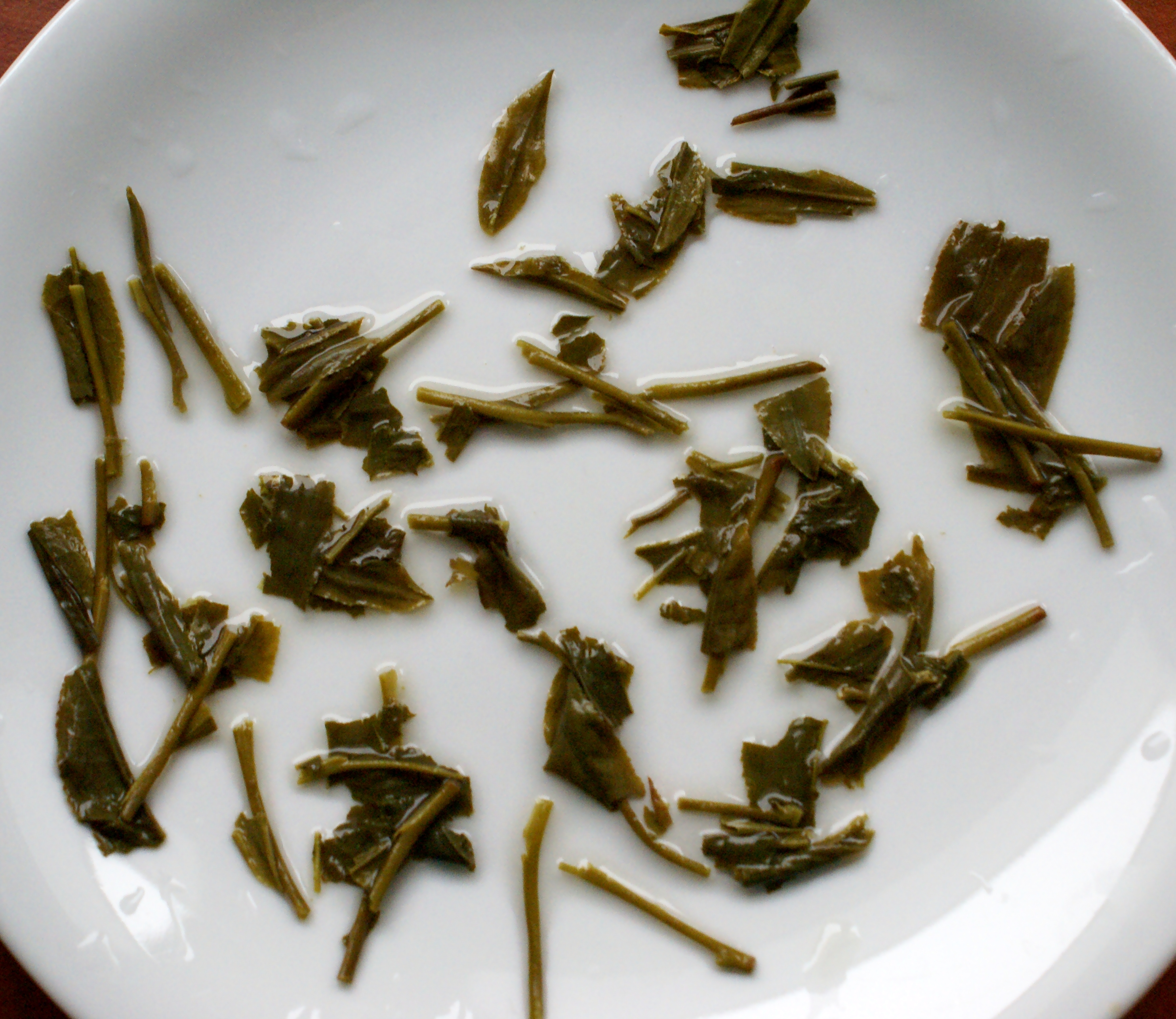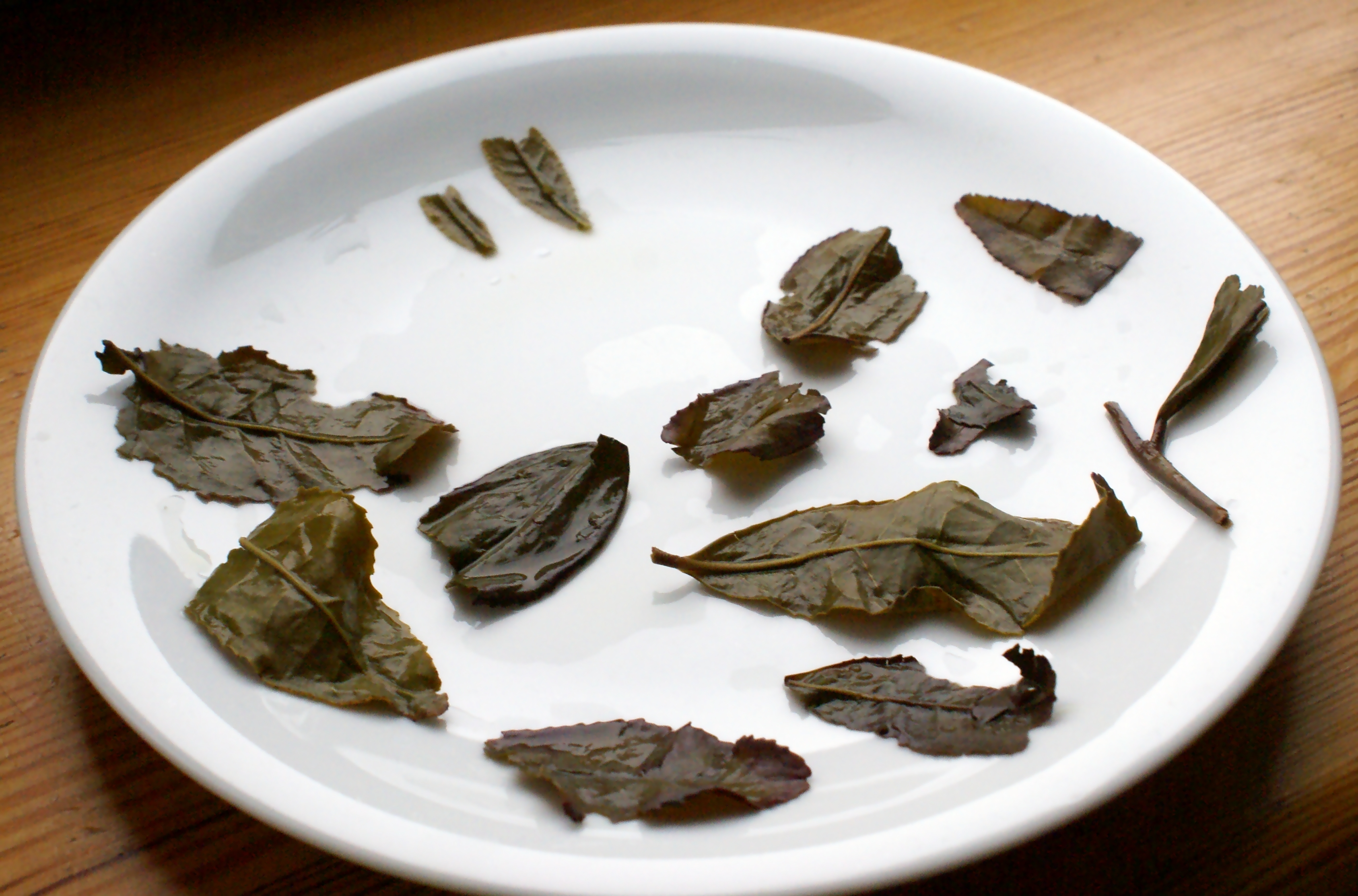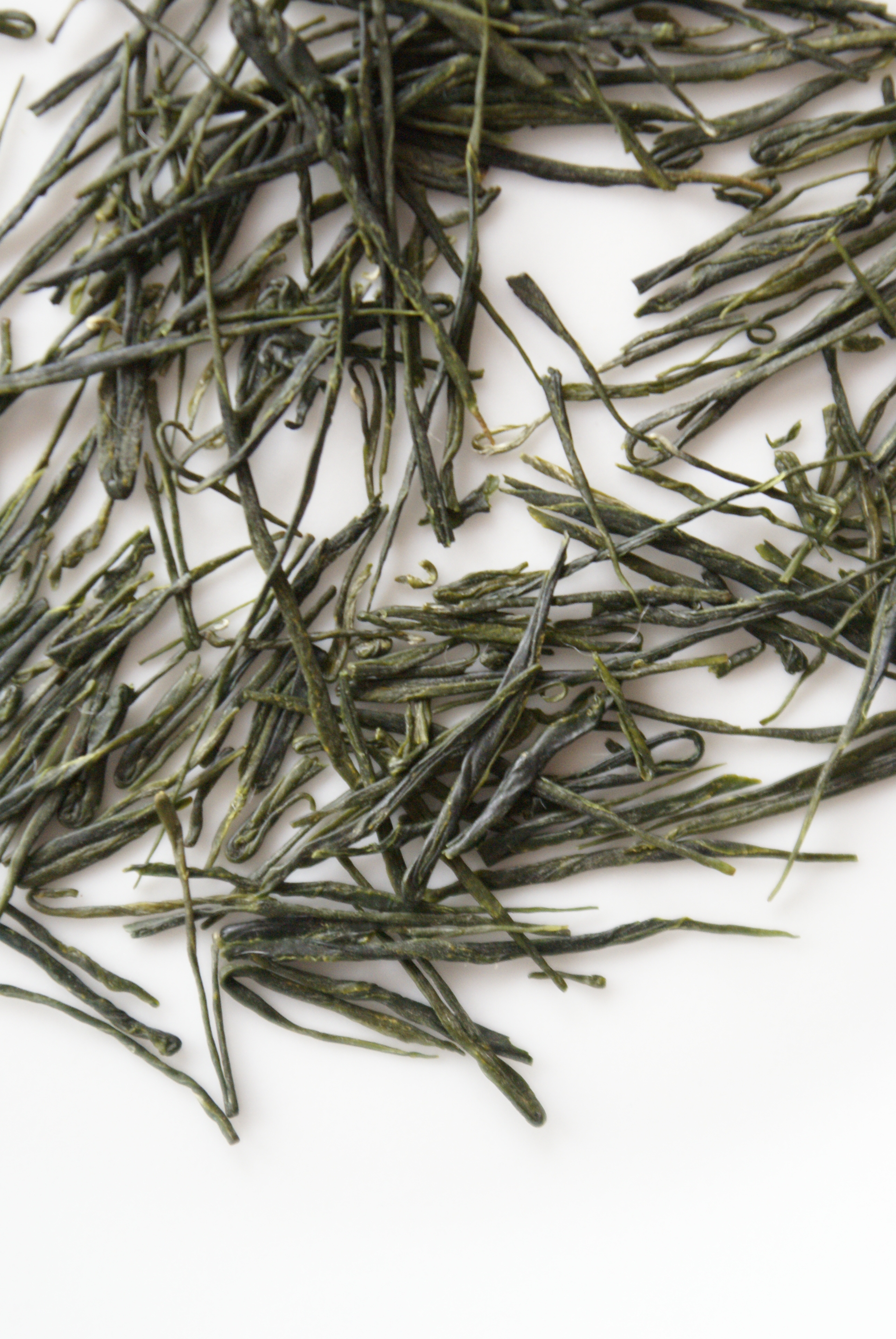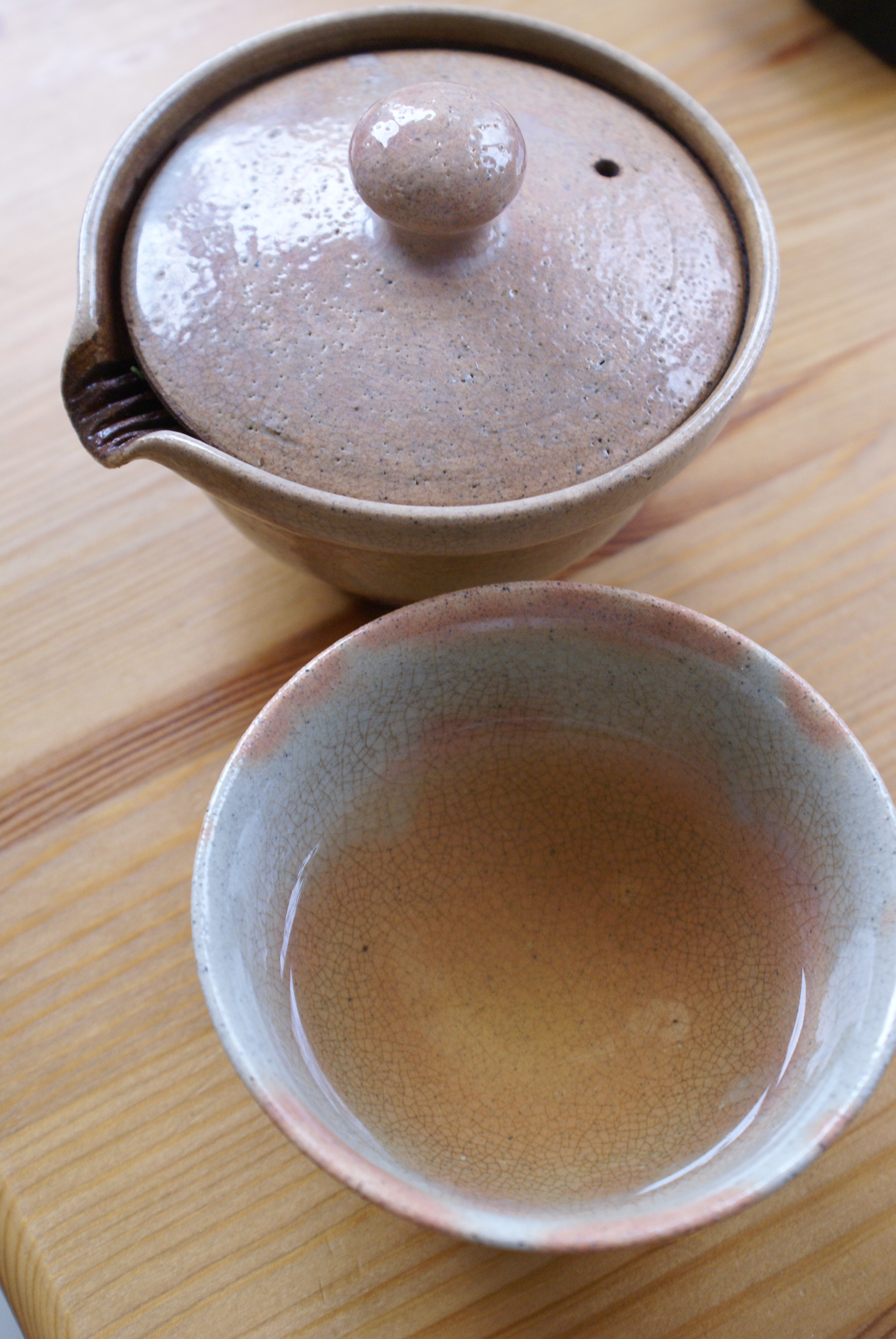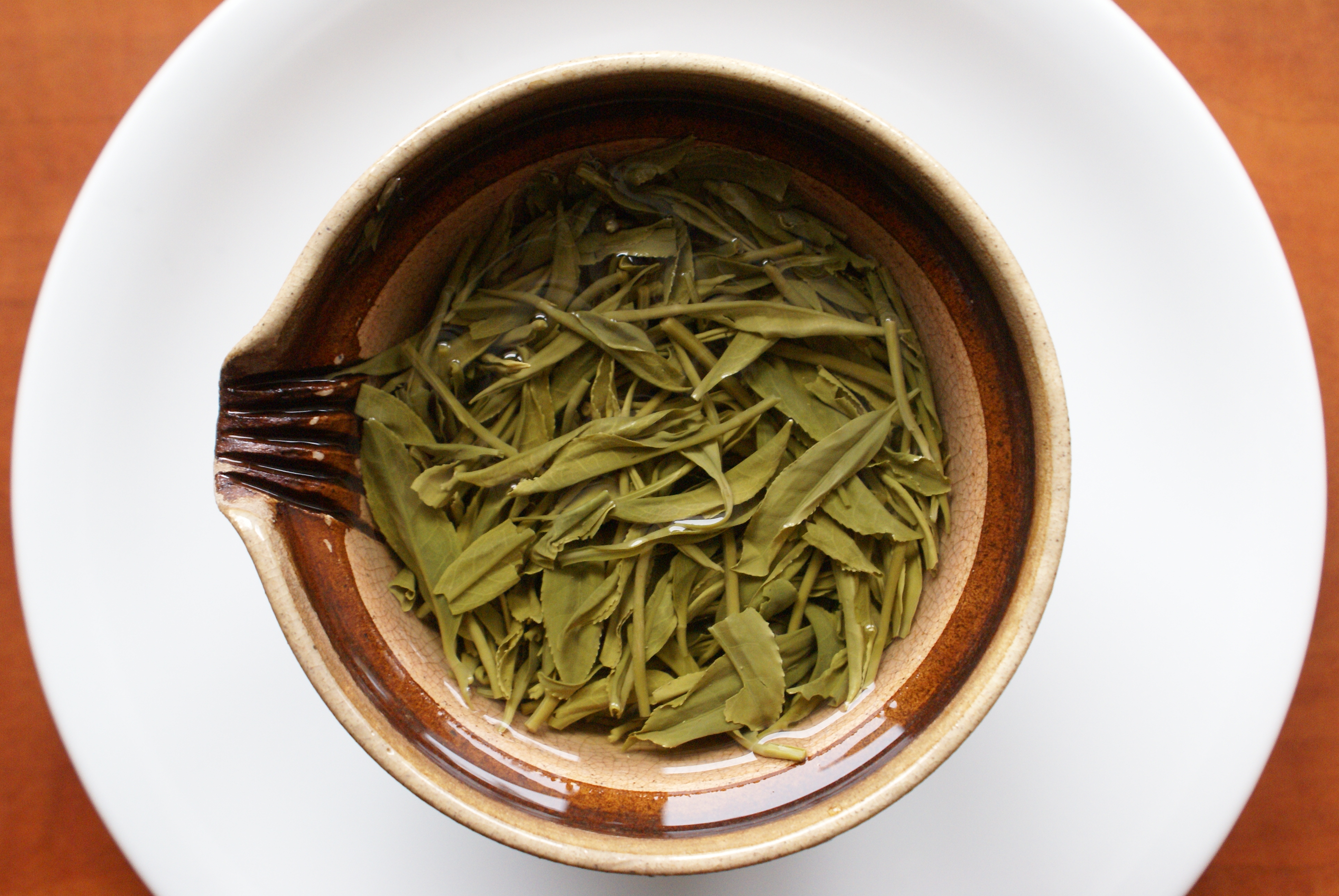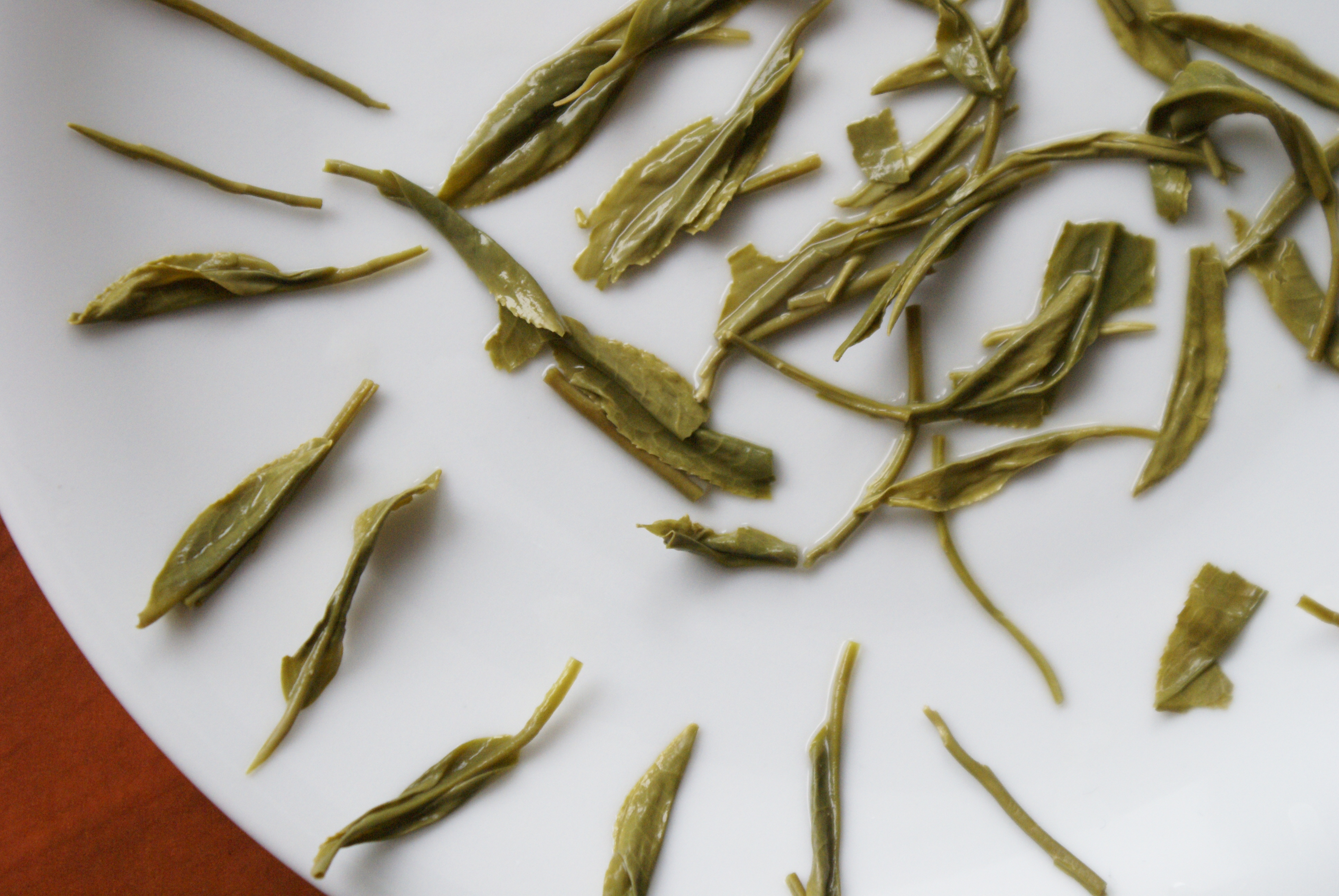Yoshiaki Hiruma’s 2010s
Posted on 8 February 2011
Last April I blogged on the teas of renowned Japanese teamaster Yoshiaki Hiruma in what has consistently proven my most popular blog entry to date. After that tasting I did approach Mr. Hiruma about ordering his teas directly, and picked up the following four different batches that I brewed on several occasions in late 2010 and early 2011. (Mr. Hiruma has a website and blog for those who read Japanese or trust Google Translate; he now has also an English-language price list, making it easier to order from him; payment is through PayPal).
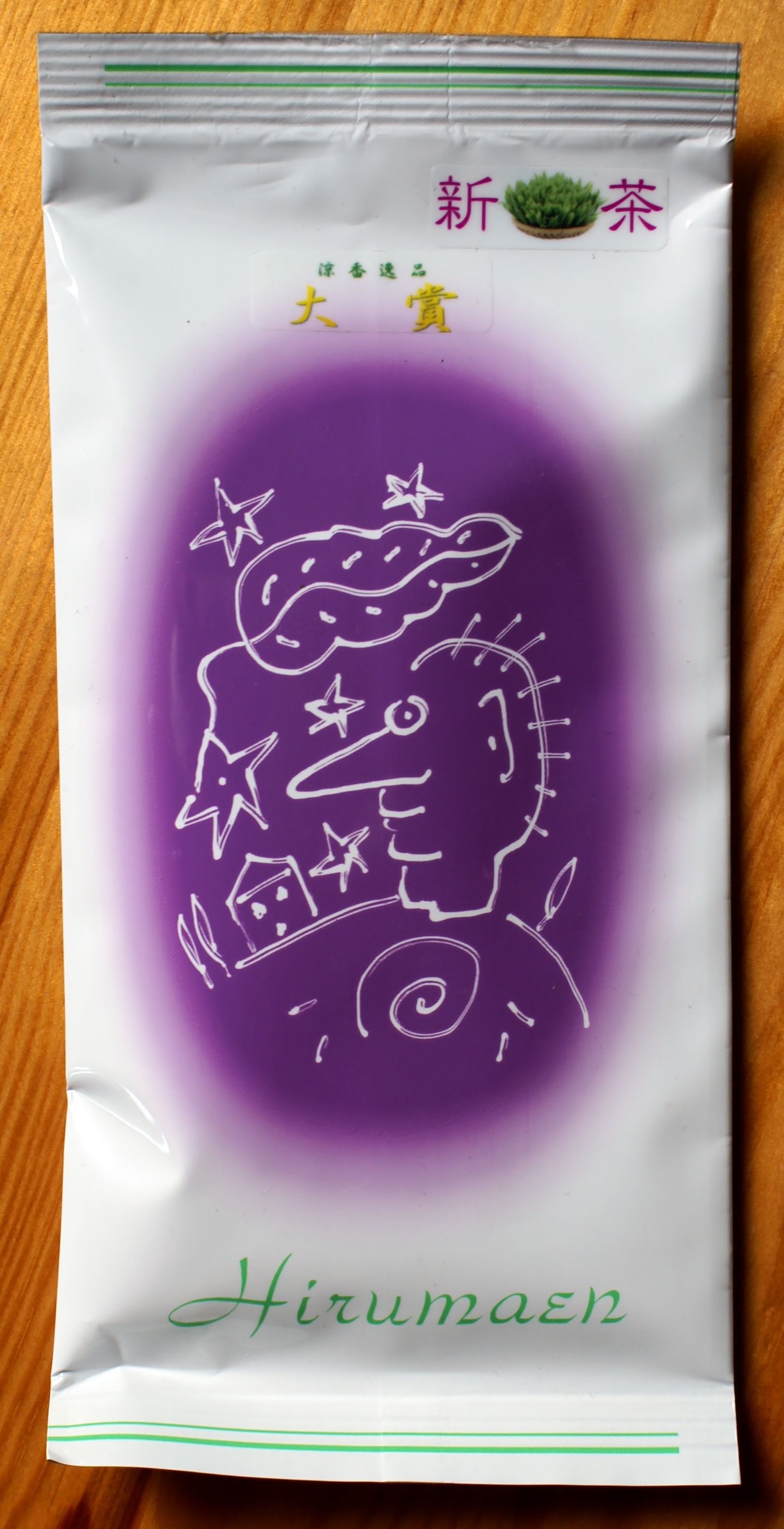 The 2010 Shincha is a low-steamed (asamushi) 100% Yabukita cultivar that Mr. Hiruma shaded for a short period of time before leaves were plucked on 12th May, so it is essentially a variation on kabusecha, or a kind of baby gyokuro if you will. In line with kabusecha the leaves are deep green but a little opaque, releasing a sweet baked bread smell when warmed in the pre-warmed teapot. I followed Mr. Hiruma’s recommended brewing parameters (more background on these in my original post): 5g of tea / 60ml of water only / water at 60C / 2 minutes. As usual with these parameters the tea comes out very concentrated with a dense soupy texture and a lot of sweetness.
The 2010 Shincha is a low-steamed (asamushi) 100% Yabukita cultivar that Mr. Hiruma shaded for a short period of time before leaves were plucked on 12th May, so it is essentially a variation on kabusecha, or a kind of baby gyokuro if you will. In line with kabusecha the leaves are deep green but a little opaque, releasing a sweet baked bread smell when warmed in the pre-warmed teapot. I followed Mr. Hiruma’s recommended brewing parameters (more background on these in my original post): 5g of tea / 60ml of water only / water at 60C / 2 minutes. As usual with these parameters the tea comes out very concentrated with a dense soupy texture and a lot of sweetness.
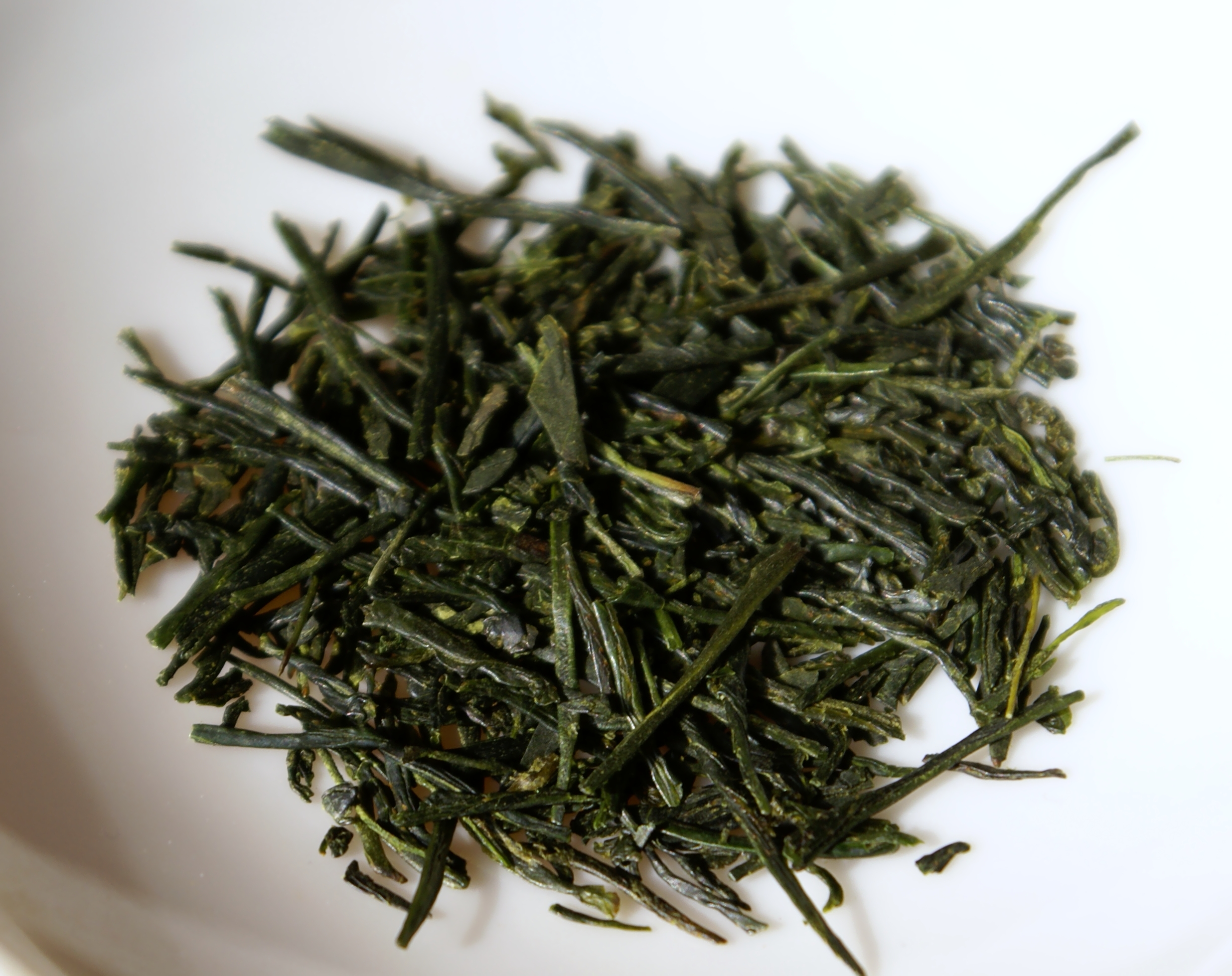 This 2010 batch doesn’t show so much umami flavour; the sustained finish ends a little drying but absolutely not bitter (again typically for kabusecha, avoiding bitterness being the major point of shading trees). The second brew lacks the initial sweetness and is dominated by dryness so I’m not quite keen on this. A solid tea with plenty of character though not being a particular fan of kabusecha, I did prefer Hiruma’s 2009 senchas.
This 2010 batch doesn’t show so much umami flavour; the sustained finish ends a little drying but absolutely not bitter (again typically for kabusecha, avoiding bitterness being the major point of shading trees). The second brew lacks the initial sweetness and is dominated by dryness so I’m not quite keen on this. A solid tea with plenty of character though not being a particular fan of kabusecha, I did prefer Hiruma’s 2009 senchas.
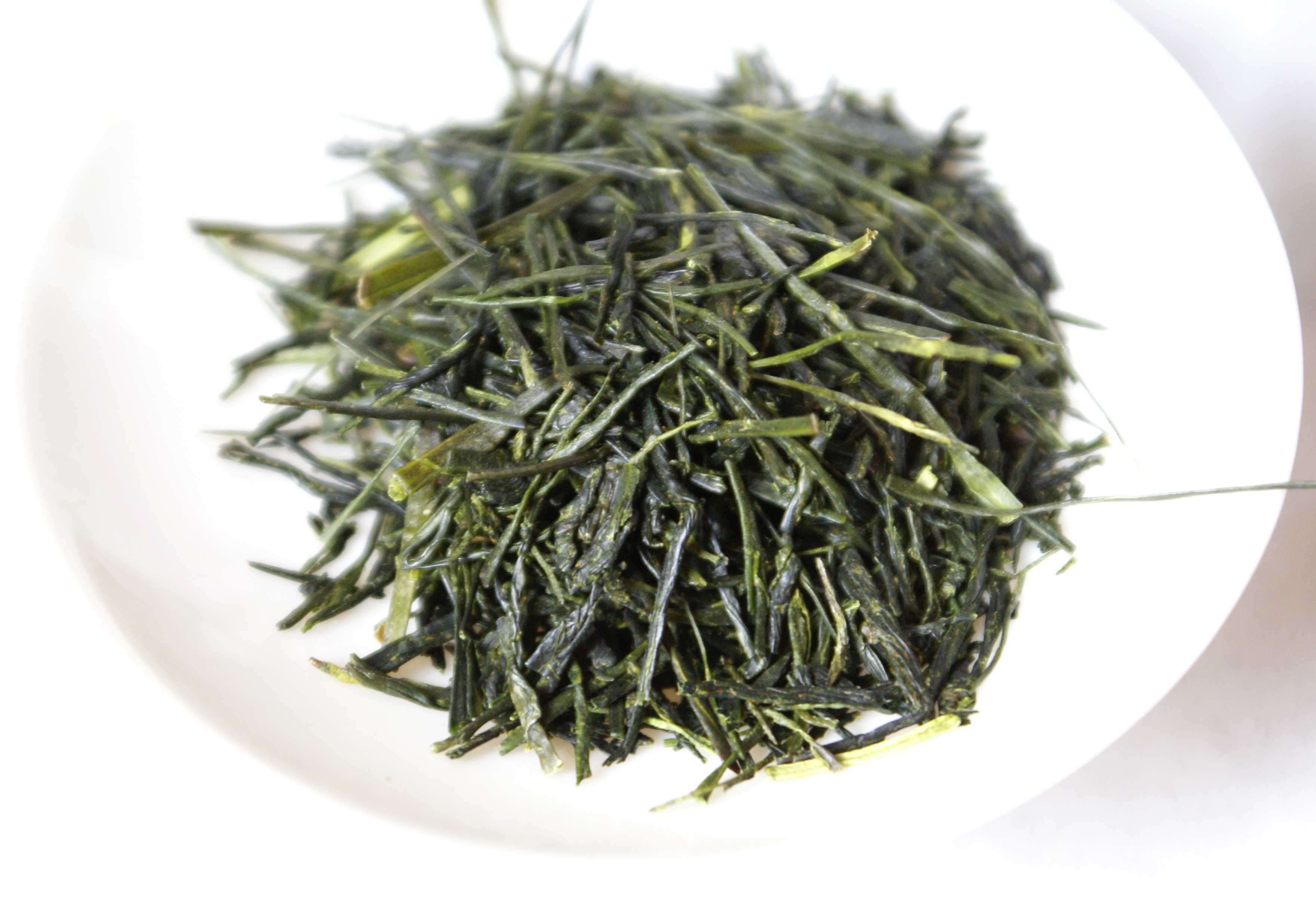 The next 2010 is a 100% Yumewakaba, a rare variety of tea tree only grown in the region of Saitama and championed by Mr. Hiruma. I was blown away by the 2009 version of this tea. The 2010 is oddly underwhelming. Broad, fat and sweet in the initial tasting, there is a moment of umami (the 2009 has lots more) before closing a little astringent. It has the sort of clean good quality tannins of very good sencha, but less personality than I remember from last year. In a really concentrated brewing (5g / 50ml) the presence of tangy kiwi-like fruit is lovely, though.
The next 2010 is a 100% Yumewakaba, a rare variety of tea tree only grown in the region of Saitama and championed by Mr. Hiruma. I was blown away by the 2009 version of this tea. The 2010 is oddly underwhelming. Broad, fat and sweet in the initial tasting, there is a moment of umami (the 2009 has lots more) before closing a little astringent. It has the sort of clean good quality tannins of very good sencha, but less personality than I remember from last year. In a really concentrated brewing (5g / 50ml) the presence of tangy kiwi-like fruit is lovely, though.
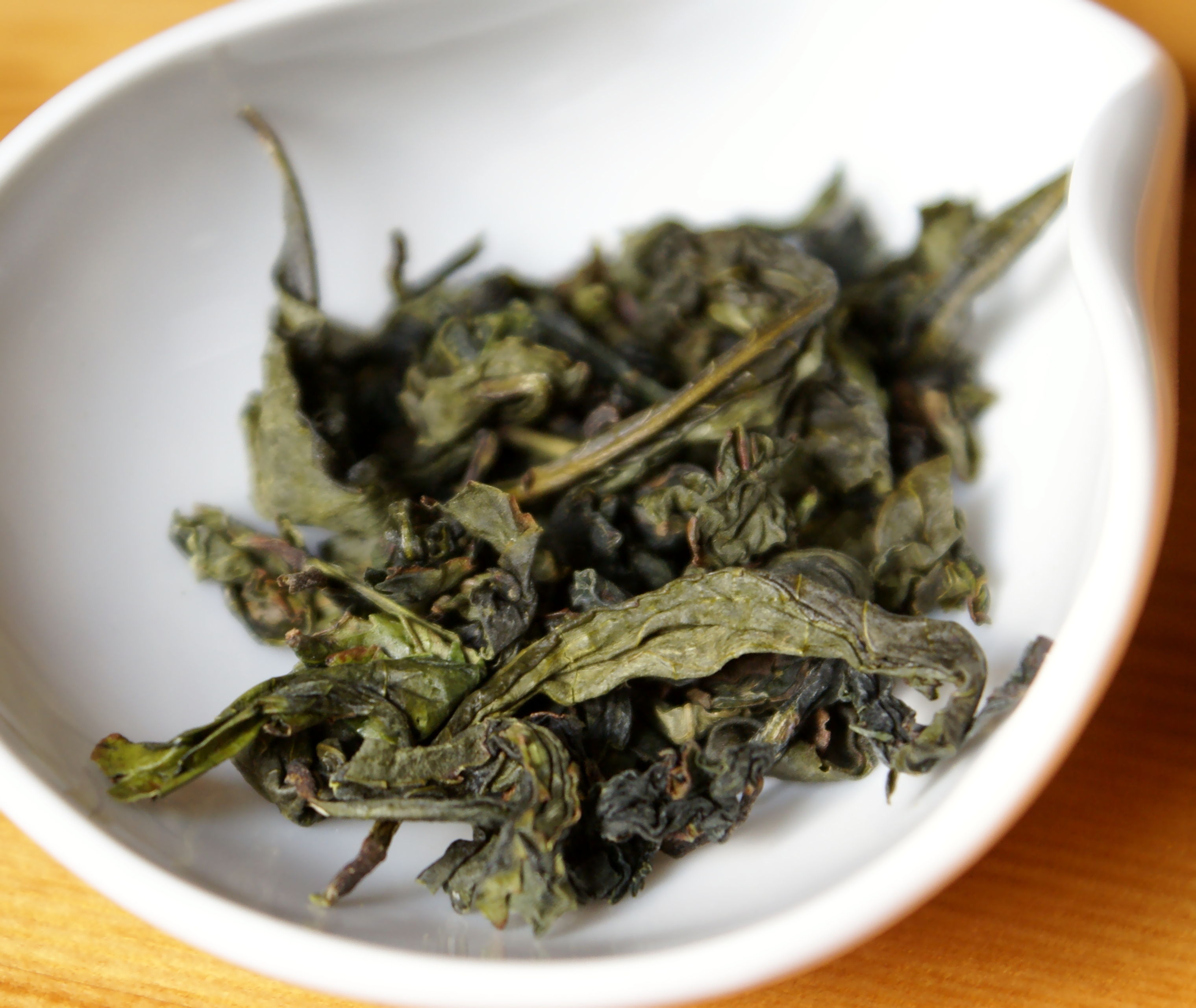 2010 Hanhakucha is the first time I try Mr. Hiruma’s oolong tea. (In 2009 I tried three of his semi-oolongs, termed bihaku sencha). This tea is extremely unusual for Japan, and is made like a Taiwanese baozhong – larger leaves down the tea branch are harvested, allowed to oxidise slightly (but not much – around 20% perhaps) and then pan-fried to stop the oxidation. Brewing is exactly like a baozhong, and I recommend using boiling water as my trials at 90C were unsuccessful.
2010 Hanhakucha is the first time I try Mr. Hiruma’s oolong tea. (In 2009 I tried three of his semi-oolongs, termed bihaku sencha). This tea is extremely unusual for Japan, and is made like a Taiwanese baozhong – larger leaves down the tea branch are harvested, allowed to oxidise slightly (but not much – around 20% perhaps) and then pan-fried to stop the oxidation. Brewing is exactly like a baozhong, and I recommend using boiling water as my trials at 90C were unsuccessful.
This Hanhakucha develops the exotic floral high notes of a baozhong, although the flavour is a little different: less fresh and leafy, smoother, sweeter and milkier, it shows its peerage from Hiruma’s classic senchas. This tea has guts for two brewings, later fading into low-flavour smoothness. An interesting experience.
Finally, my look at Mr. Hiruma’s cheval de bataille, the 100% hand-processed whole-leaf temomicha. Basically it’s a sencha that’s been hand-rubbed over several hours instead of the usual machine processing. (See last year’s post for a full tasting note of that unforgettable version). Ordering in the late spring, I was only offered an introductory Temomicha at ¥525 per 5g pack; the 2009 I tried was over ¥1000 and later in 2010 Mr. Hiruma was selling a competition grade for no less than ¥5250 per pack! (That’s 50€ for a single serving of tea).
The cheaper Temomicha I tried this year was definitely worth its price, although it’s quite different from the 2009 version. The latter was a distilled essence of pure umami flavour, while this 2010 counteracts umami with considerable sweetness and then bitterness on the end; it’s clearly less pure and quite coarser than the 2009, but it has an incredibly intensity and mindblowing length of flavour. In fact as I walked from my study to the kitchen to heat some water for a second brewing, poured water over the leaves, poured the tea into a tasting cup, I could still taste the first brewing! (Brewings #2 and 3 came out much less exciting, as is usual with this brewing regime where most of the tea’s reserves are used in #1). Any tea lover should treat themselves to tasting Mr. Hiruma’s Temomicha at least once. It’s a unique experience. And it’s soon time to order the 2011s.
Source of teas: own purchase.


